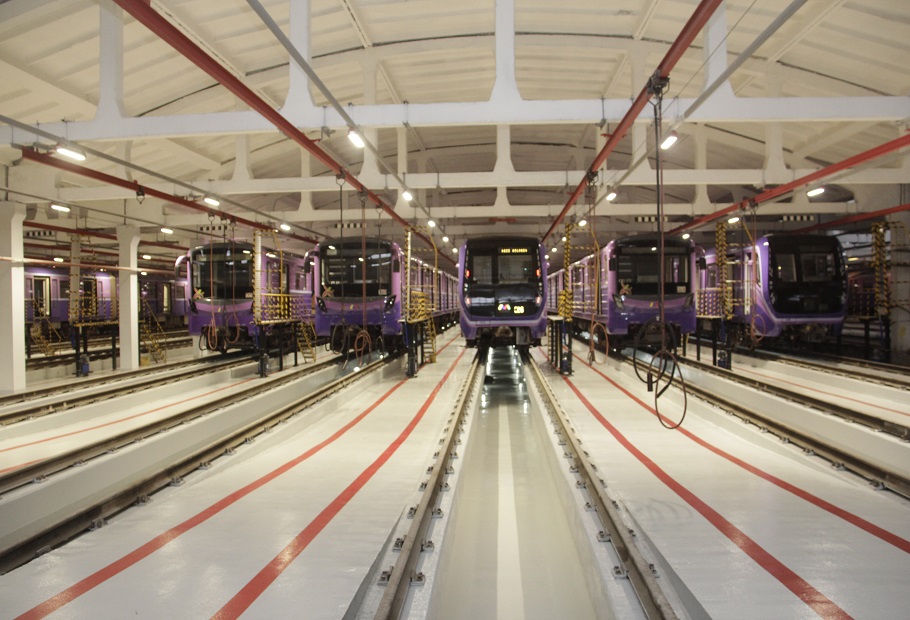
21 DECEMBER / 2023 / 14:53
Significant repair and reconstruction activities have concluded at the "Narimanov" electrical depot of the Baku metro, specifically in two additional train maintenance, repair, and maintenance areas (railways). The considerable rise in passenger numbers, consequently increasing the demand for trains on the line and intensifying traffic, along with the pursuit of the most optimal traffic schedule for the current period and the creation or expansion of new production areas, mandated reconstruction measures at the depot established in 1966. The singular power depot serving the Red and Green lines further emphasized the necessity for these actions.
Commencing in 2014 to fortify the material and technical supply areas, and since 2017, the ongoing creation of new areas has been a pivotal development. Consequently, a substantial reduction in defective trains returning from the line, the timely and qualitative execution of the repair process, the formation of a spare parts base, and the minimization of direct dependence on external sources in the repair process will ber achieved. Numerous initiatives laid the groundwork for significant improvements. However, these achievements are contingent on proper conditions for the reconstruction of train maintenance and inspection areas, especially in implementing regular and operational measures. Therefore, reconstruction steps are taken incrementally without disrupting the work process in the field of putting trains on the line.
In the depot, which has remained unreconstructed and technologically outdated since its inception, two additional areas within the train repair-maintenance and stopping-overnight domain have been revamped to facilitate continuous maintenance of trains. Both areas underwent complete demolition and subsequent reconstruction. Previously serving solely as a stopover, these two cabins have now been repurposed for technical inspection and maintenance.
In the course of the reconstruction efforts, the foundation layer was meticulously removed in accordance with standards, the depth was excavated, and landing stairs were installed to facilitate functional activities. A new concrete base layer was then meticulously crafted on the floor, and the walls were plastered and painted. Simultaneously, viewing paths on the side of the ganovs were filled with a carbonate and gravel layer, concreted in strict adherence to relevant regulations.
New drainage systems, a modern electricity supply, and a lighting system have been seamlessly integrated into the depots. Alongside the installation of contemporary track superstructure elements, special lifting mechanisms have been incorporated to serve the front part of the main carriage of the trains. Enhancing the aesthetic appearance, the field's floor is coated with a resilient epoxy substance.
Ultimately, modern switching devices of a new type have been implemented for the area of receiving and releasing trains in the reconstructed railways. Overall, 15 out of the 32 buildings in the power depot have undergone comprehensive overhauls and reconstructions to align with modern standards.
As part of the repair process, the road bed leading to the depot roads has undergone complete renewal. The railway bed was dismantled, and an entirely new infrastructure was established on reinforced concrete sleepers, based on a gravel foundation in strict adherence to the new requirements. Over the last three years, eight diverting devices centered on park roads were transitioned to reinforced concrete diverter beams. This updated technological model and the modernization of the system, known for its simplicity, ease of maintenance, and extended lifespan, yield significant benefits in terms of technical optimization. This innovation further reduces the risk of train derailment. Notably, it is durable and exhibits high resistance to disintegration in outdoor conditions, particularly in Baku's variable climate.